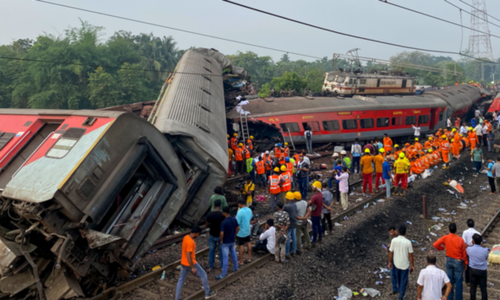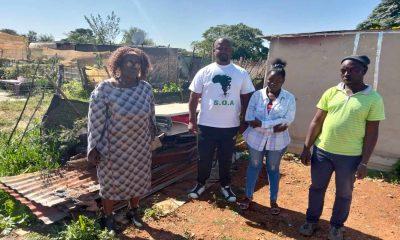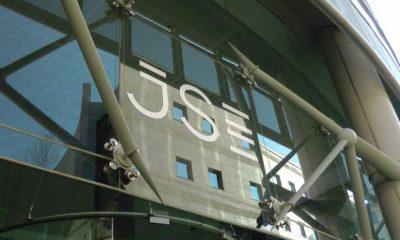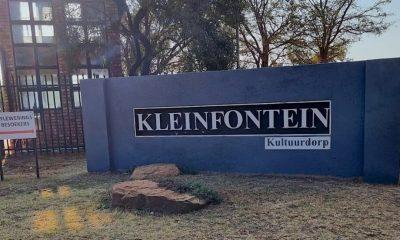World
Signal System Failure Linked to Deadly Train Crash in India

Piles of debris were stacked high at the scene of the train crash that occurred on Friday night near Balasore in the eastern state of Odisha. Workers began clearing the wrecked carriages and the blood-stained remains where hundreds of people were also injured.
The hospitals in the area have been overwhelmed by the sheer number of casualties as reported by Jacarandafm.
“We have identified the cause of the accident and the individuals responsible for it,” stated India’s Railway Minister Ashwini Vaishnaw to the news agency ANI. However, he added that it would be inappropriate to disclose the details until a final investigation report is available.
While the exact sequence of events remained unclear, reports suggested that a signalling error caused the Coromandal Express, which was travelling south from Kolkata to Chennai, to be directed onto a side track. Consequently, it collided with a freight train, derailing another express train heading north from India’s technological hub, Bengaluru, to Kolkata, which happened to be passing through the same area.
Pradeep Jena, the chief secretary of Odisha state, confirmed that approximately 900 injured individuals had been admitted to hospitals.
Also Read: Gauteng’s crime prevention wardens take on unauthorised informal settlements
Vaishnaw explained, “The accident occurred due to a change that took place during electronic interlocking,” referring to a technical term denoting a sophisticated signal system designed to prevent train collisions by coordinating their movements on the tracks. He further added, “Whoever is responsible and how it happened will be revealed after a thorough investigation.”
Prime Minister Narendra Modi visited the crash site on Saturday and met with the injured passengers receiving treatment in the hospital. He assured that no one accountable for the tragedy would be spared. “I pray that we overcome this sorrowful moment as quickly as possible,” he conveyed to the state broadcaster Doordarshan.
The rescue operation concluded on Saturday evening after emergency personnel meticulously combed through the mangled wreckage in search of survivors. Scores of bodies were laid out under white sheets beside the tracks. A nearby high school was transformed into a makeshift morgue. However, officials mentioned that many bodies were so disfigured that distraught families could only identify their loved ones with their jewellery.
Ranajit Nayak, the police officer responsible for releasing the bodies at the school, shared, “There were bodies with only a torso, an entirely burnt face, disfigured skull, and no other visible means of identification left.”
In the scorching heat, many of the bodies were being transported to larger facilities, and officials suggested that some might only be identified through DNA testing.
Mohammad Abid, aged 35, revealed that his 18-year-old son miraculously survived the crash unscathed, but he was still searching for his cousin who was travelling with him. Expressing his anguish, Abid said, “I want to know how two trains were allowed on the same track… someone should be punished for this.”
Vishwanath Sahni, aged 47 and consumed by grief, desperately sought his 26-year-old son Manoj Kumar, who was en route to Chennai for work in the textile industry. After visiting every hospital within his reach, Sahni now waits at a morgue. “I don’t know if I’ll find my son, and even if he’s here, how can they ensure that I receive only his body?” he questioned.
By his side, his friend Mahender Yadav, aged 60, patiently waited, as his two sons who were traveling with Kumar were recovering in the hospital. “One of them has serious injuries, but I have faith that they are in a hospital and the doctors will do their best,” Yadav expressed. “I just wanted to be with Sahni and hope that he finds his son.”
Authorities disclosed that every hospital located between the crash site and the state capital of Bhubaneswar, approximately 200 kilometers (125 miles) away, had received victims. Around 200 ambulances, and even buses, were deployed to transport them.
India boasts one of the world’s largest rail networks and has witnessed numerous accidents throughout the years. Among the worst incidents was in 1981, when a train derailed while crossing a bridge in Bihar and plunged into the river below, claiming the lives of between 800 and 1,000 people. Friday’s crash stands as the third most devastating and the deadliest since 1995, when two express trains collided in Firozabad, near Agra, resulting in the deaths of over 300 individuals.
Despite recent investments and technological upgrades that have significantly improved railway safety in recent years, disasters like these continue to occur.
Condolences have poured in from various parts of the world, including messages from Pope Francis, UN Secretary-General Antonio Guterres, US Secretary of State Antony Blinken, and French President Emmanuel Macron.
Also Read:
Follow us on Google News
Photo: Twitter / @Jacarandafm






















